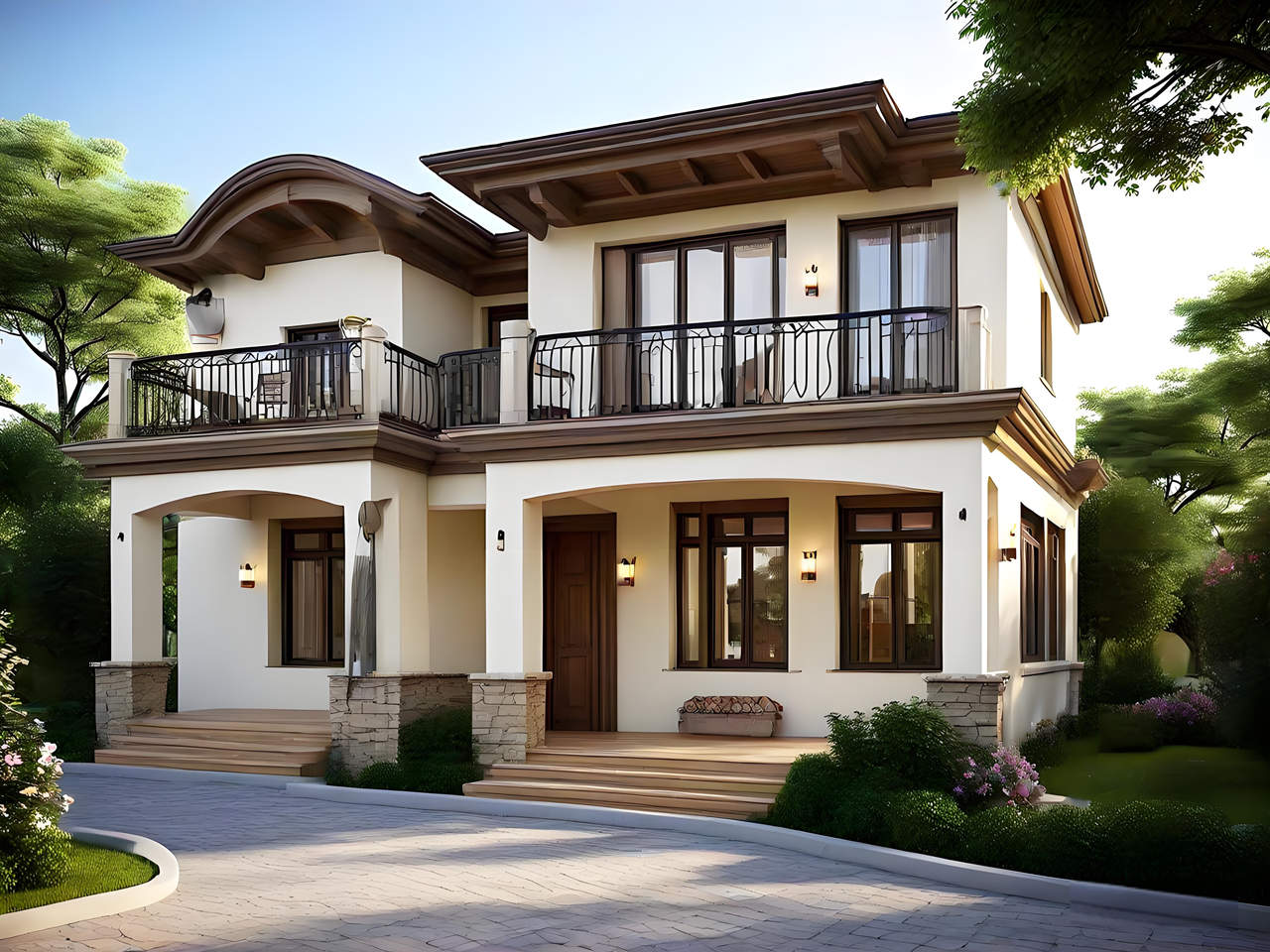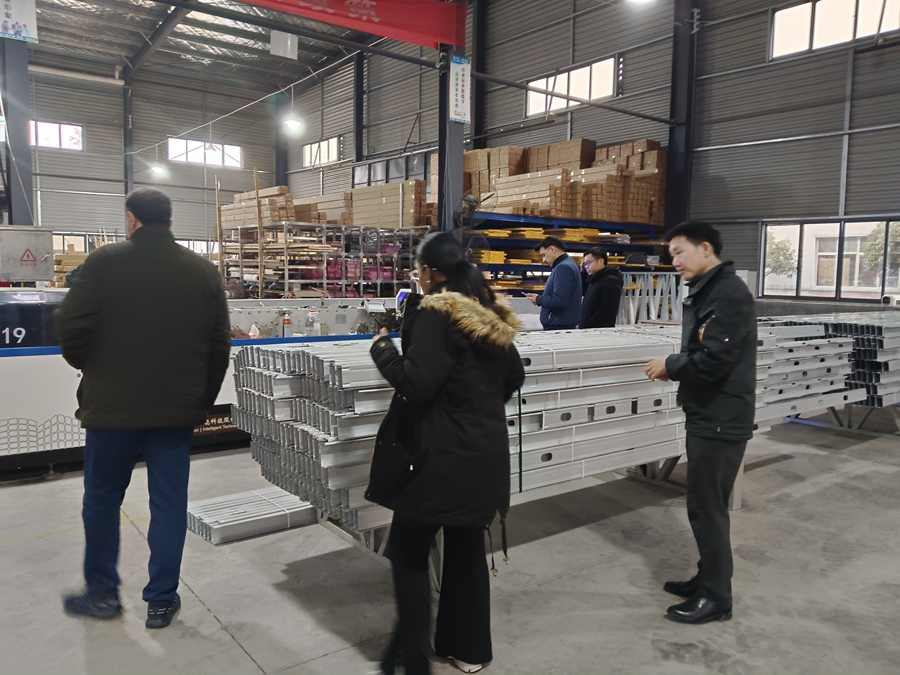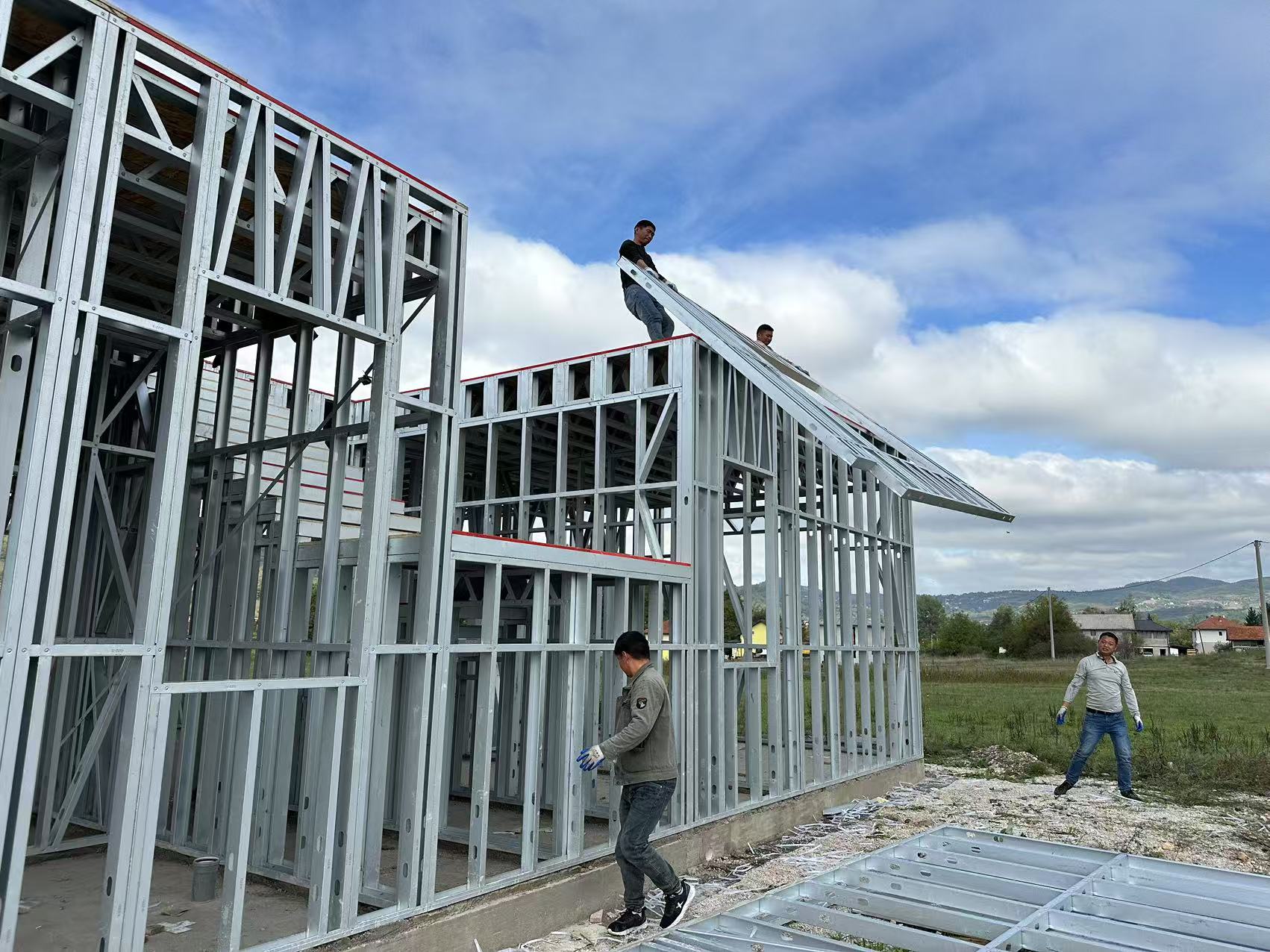As a new type of building structure, light steel villas have gained increasing attention due to their environmental friendliness, energy efficiency, aesthetics, and durability. The following are some of the main environmentally friendly materials used in the construction of light steel villas, along with their characteristics. This article is presented by the editor of Ruijie Light Steel Villa Company.

1. Galvanized Steel Sheets
Galvanized steel sheets are one of the main structural materials used in light steel villas. They have advantages such as corrosion resistance, fire resistance, and moisture resistance. The galvanizing process forms a zinc layer on the surface of the steel sheet, which effectively prevents oxidation and corrosion, thereby extending the lifespan of the building. In addition, galvanized steel sheets can be recycled after use, adhering to the principles of a circular economy and reducing environmental impact.
2. Polystyrene Foam Plastic
Polystyrene foam plastic is an efficient thermal insulation material that offers good heat retention and soundproofing performance. The use of this material can reduce the building's energy consumption and improve the comfort of living. Additionally, polystyrene foam plastic is recyclable, and its production and recycling processes have low energy consumption and minimal environmental pollution.

3. Aluminum Alloy
Aluminum alloy is mainly used for doors, windows, and other fittings in the construction of light steel villas. Aluminum alloy is lightweight, strong, corrosion-resistant, and has a low energy consumption and minimal pollution during production. These characteristics make aluminum alloy an environmentally friendly building material. Its use not only enhances the safety and durability of the building but also reduces its environmental impact.
4. Composite Exterior Wall Materials
The exterior wall materials of light steel villas are typically composite materials made of light steel framing, fire-resistant gypsum boards, insulation materials, and exterior decorative panels. This material is lightweight, high-strength, earthquake-resistant, and environmentally friendly, as it is non-toxic and has a minimal environmental impact. Moreover, these materials can be recycled, aligning with the concept of sustainable development.

5. Eco-Friendly Paints
For surface treatment, light steel villas use spraying technology for the exterior and eco-friendly materials for the interior, reducing environmental pollution. Eco-friendly paints are those that have minimal environmental and health impacts during their production, use, and disposal. They usually do not contain volatile organic compounds (VOCs) or other harmful substances, reducing the negative impact on indoor air quality.
6. Renewable Energy Systems
Although not a building material, light steel villas are often equipped with renewable energy systems such as solar photovoltaic panels and solar water heaters. The use of these systems not only reduces carbon emissions from the building but also provides clean energy, further enhancing the environmental performance of light steel villas.
Conclusion
In the selection of materials and construction processes, light steel villas fully consider environmental factors and utilize various eco-friendly materials and technologies. These materials not only have a minimal environmental impact during use but can also be recycled at the end of their lifecycle, meeting the requirements of sustainable development. By using these environmentally friendly materials, light steel villas provide a comfortable living environment while reducing the consumption of natural resources and environmental pollution, showcasing their superiority as green buildings.